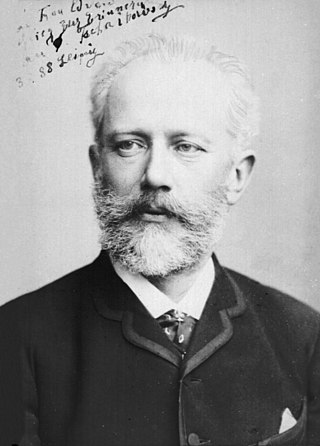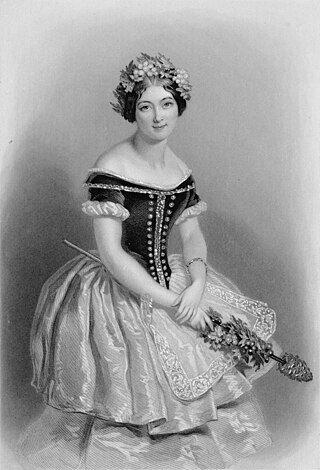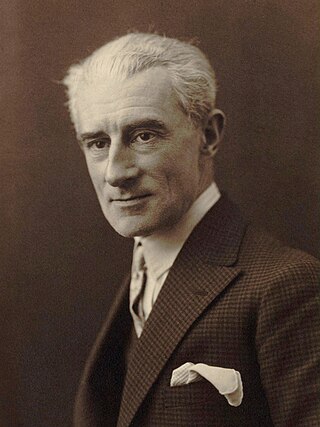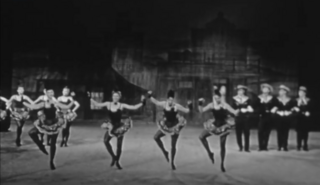
The Nutcracker, Op. 71, is an 1892 two-act classical ballet by Pyotr Ilyich Tchaikovsky, set on Christmas Eve at the foot of a Christmas tree in a child's imagination featuring a Nutcracker doll. The plot is an adaptation of Alexandre Dumas' 1844 short story The Nutcracker, itself a retelling of E. T. A. Hoffmann's 1816 short story The Nutcracker and the Mouse King. The ballet's first choreographer was Marius Petipa, with whom Tchaikovsky had worked three years earlier on The Sleeping Beauty, assisted by Lev Ivanov. Although the complete and staged The Nutcracker ballet was not initially as successful as the 20-minute Nutcracker Suite that Tchaikovsky had premiered nine months earlier, it became popular in later years.

Giselle, originally titled Giselle, ou les Wilis, is a romantic ballet in two acts with music by Adolphe Adam. Considered a masterwork in the classical ballet performance canon, it was first performed by the Ballet du Théâtre de l'Académie Royale de Musique at the Salle Le Peletier in Paris on 28 June 1841, with Italian ballerina Carlotta Grisi as Giselle. It was an unqualified triumph. It became hugely popular and was staged at once across Europe, Russia, and the United States.

Les Sylphides is a short, non-narrative ballet blanc to piano music by Frédéric Chopin, selected and orchestrated by Alexander Glazunov.
A hoedown is a type of American folk dance or square dance in duple meter, and also the musical form associated with it.

Appalachia Waltz is the first album from the trio of cellist Yo-Yo Ma, double-bassist and composer Edgar Meyer, and fiddler and composer Mark O'Connor. Sony Classical released the disc in 1996. It was recorded over three days, 14–17 August 1995.

La valse, poème chorégraphique pour orchestre, is a work written by Maurice Ravel between February 1919 and 1920; it was first performed on 12 December 1920 in Paris. It was conceived as a ballet but is now more often heard as a concert work.

Western Symphony is a ballet made by New York City Ballet co-founder and founding choreographer George Balanchine to American folk tunes arranged by Hershy Kay. It premiered on September 7, 1954 at the City Center of Music and Drama in New York. The ballet was originally presented in practice clothes without scenery. Scenery by John Boyt and costumes by Karinska were added in 1955. Lighting was originally by Jean Rosenthal and subsequently Mark Stanley. Set in the Western United States, the ballet features cowboys and dance hall girls.

Grete Wiesenthal was an Austrian dancer, actor, choreographer, and dance teacher. She transformed the Viennese Waltz from a staple of the ballroom into a wildly ecstatic dance. She was trained at the Vienna Court Opera, but left to develop her own more expressive approach, creating ballets to music by Franz Schreker, Clemens von Franckenstein, and Franz Salmhofer, as well as dancing in her own style to the waltzes of Johann Strauss II. She is considered a leading figure in modern dance in Austria.
Valse Triste is a ballet choreographed by Peter Martins when he was balletmaster at the New York City Ballet to Sibelius's eponymous waltz as well as the music called Scene with Cranes from his incidental music for the play Kuolema (Death). The crane is a symbol of death in Finnish literature. The premiere took place on May 23, 1985, at the New York State Theater, Lincoln Center, with original lighting by Ronald Bates and current lighting by Mark Stanley.
Miriam Mahdaviani is a choreographer, a former New York City Ballet dancer and a repetiteur for the George Balanchine Trust. She has created ballets for NYCB's 1988 American Music Festival and its Diamond Project in 1992, 1994,1997, 2000 and 2002. She also choreographed ballets for Pacific Northwest Ballet, Richmond Ballet, Jacob's Pillow, Vassar College, NYU Tisch School of the Arts, SUNY Purchase, and others. Internationally, her ballets have been presented at MaggioDanza in Florence, Italy and at the Edinburg Festival in Scotland.
Kyra Nichols is an American retired ballet dancer and teacher. She joined the New York City Ballet in 1974 and was promoted to principal dancer in 1979. She is one of the last dancers to have worked with George Balanchine, although he did not create any new work on her. However, she originated roles in several ballets by Jerome Robbins. Nichols retired from performing in 2007, after a 33-year career.
Ives, Songs is a ballet made by New York City Ballet ballet master Jerome Robbins to songs of Charles Ives:

Dances at a Gathering is a ballet choreographed by Jerome Robbins to music by Frédéric Chopin, with costumes designed by Joe Eula. The ballet premiered on May 22, 1969, at the New York State Theater, performed by the New York City Ballet.
Vienna Waltzes is a ballet choreographed by George Balanchine to music by Johann Strauss II, Franz Lehár and Richard Strauss, made as a tribute to Austria. It premiered on June 23, 1977 at the New York State Theater, performed by the New York City Ballet, and was an immediate success among the public.
Liebeslieder Walzer is a two-part neoclassical ballet choreographed by George Balanchine to Johannes Brahms' Liebeslieder Waltzes, Op. 52 and Neue Liebeslieder, Op. 65, with original sets and lighting designed by David Hays, and costumes designed by Barbara Karinska. The ballet premiered on 12 November 1960 at the New York City Center, performed by the New York City Ballet.

Sasha Alexandra Waltz is a German choreographer, dancer and leader of the dance company Sasha Waltz and Guests.
Masquerade was written by Aram Khachaturian in 1941 as incidental music for a production of Mikhail Lermontov's play of the same name. He turned it into a suite with five movements for an orchestra in 1944. It is best known for the Waltz, widely considered one of Khachaturian's finest and most popular pieces, second in popularity only to "Sabre Dance" from the ballet Gayane.
Maria Calegari is an American ballet dancer, teacher and répétiteur. She joined the New York City Ballet in 1974 and became a principal dancer in 1983. She left the company in 1994, then occasionally performed until 2004. She also teaches ballet and began working as a répétiteur for the Balanchine Trust and Robbins Rights Trust in 1996 and 2003 respectively.
Five Brahms Waltzes in the Manner of Isadora Duncan is a ballet solo choreographed by Frederick Ashton to music by Johannes Brahms, inspired by Isadora Duncan and created for Lynn Seymour. The first version, under the title Brahms Waltz, used only Brahms' Op. 39, No. 15, and premiered on 22 June 1975, at the Hamburg State Opera. The expanded version, which featured more Brahms waltzes, premiered on 15 June 1976, during Ballet Rambert's 50th anniversary gala, at the Sadler's Wells Theatre, London, and is dedicated to Marie Rambert.
La Valse is a ballet choreographed by George Balanchine to Maurice Ravel's Valses Nobles et Sentimentales and La Valse. It premiered on February 20, 1951, at the City Center of Music and Drama, performed by the New York City Ballet. The ballet depicts dancers waltzing in a ballroom, during which a woman becomes attracted to a figure of death, and ultimately dies.








